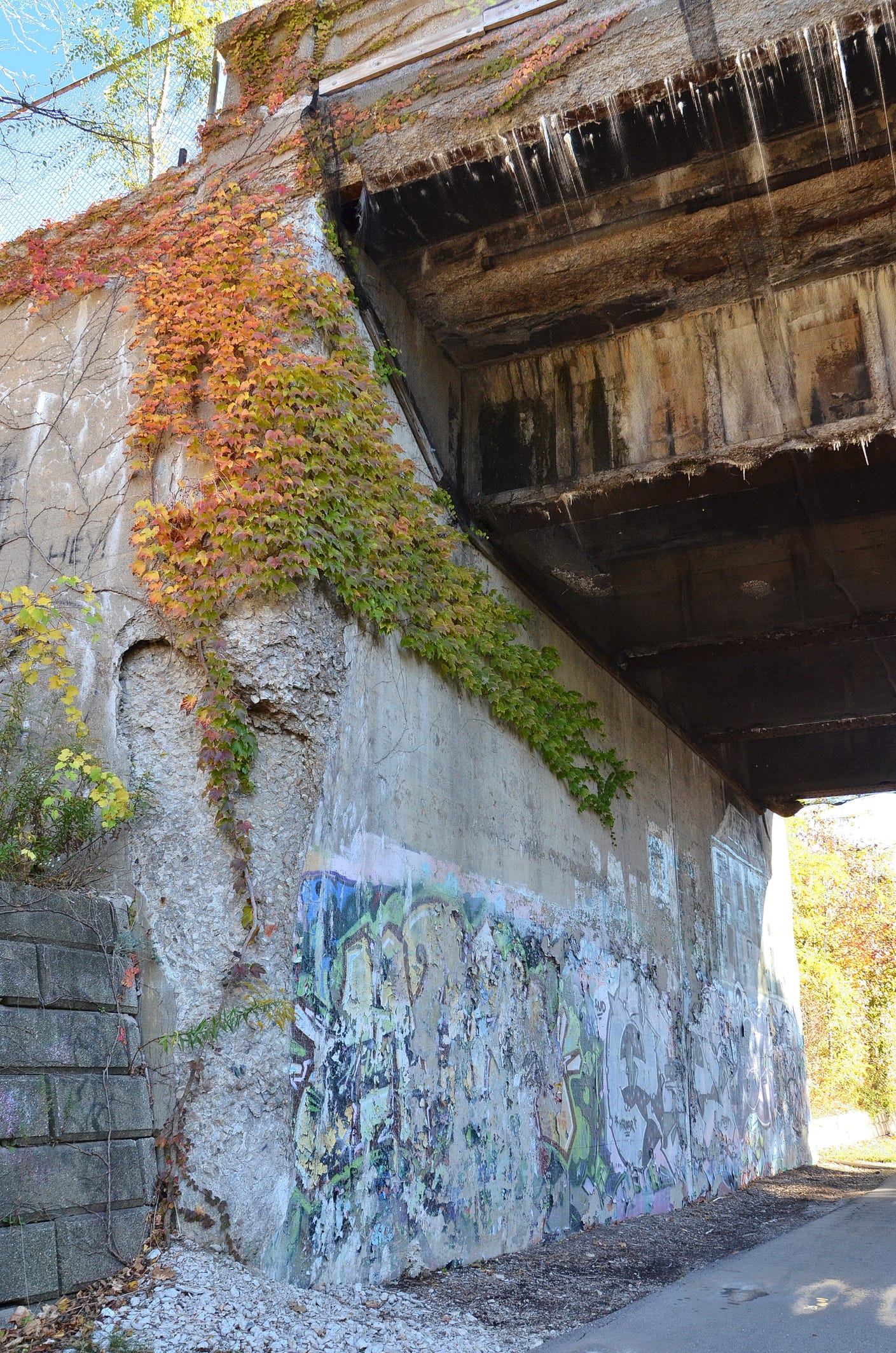Turning lost landscapes into pleasant parks
What once was an industrial wasteland, now two large art objects and changing sculptures compete with Mother Nature for the attention of visitors.
Under the shadow cast by New York’s Brooklyn Bridge, children from toddlers to teens have fun in areas named Sandbox Village, Swing Valley, and Slide Mountain.
Elsewhere, a more somber note is set by ceramic medallions that relate to a sad chapter in the tale of the treatment of Native Americans during the 19th century.
The trait shared by these disparate scenes is that they’re located in parks around the country. What makes the settings different is that the green spaces occupy terrain that recently was considered worthless and unusable.
Giving new life to old places
In recent years, with available land becoming increasingly scarce, a growing number of abandoned industrial and other sites blighting the landscape and the growth of the environmental movement, tracts that were thought to be useless have been given a new life.
Abandoned train tracks have been repurposed as greenways. Once barren stretches along rivers and beneath bridges invite people to enjoy the outdoors.
A description of this trend, and of places around the country and the world where it may be enjoyed, is set out in a beautifully illustrated book titled parks of the 21st Century. Author Victoria Newhouse describes locations that have been discarded and left to decay until they were given new life and function. The text can serve as a guide for making plans to enjoy what the book calls “reinvented landscapes.”
An inviting playland recalls the Chicago Fire
The sculptures that vie with nature in terms of beauty lie along the 606 Bloomingdale Trail in Chicago. Its name recalls that after the great fire of 1871, a railroad was allowed to lay tracks down Bloomingdale Avenue.
That narrow green belt traverses a thick bed of soil on top of a subsurface parking garage. Along with a large performance pavilion, ice skating rink, running lanes and other facilities, there’s little wonder why the park is a major attraction for people, some 25 million of whom visited in a recent year.
Art of various kinds draws people to other reclaimed sites. They include sculptures scattered about Renaissance Park in Chattanooga, Tennessee, and “Quarry Rings” installed around Thomas C. Wales Park in Seattle, Washington, which occupies an abandoned gravel quarry.
Waterside parks abound
The East River, which the Brooklyn Bridge spans, is just one body of water that reimagined parks now front. The Waterloo Greenway under construction in Austin, Texas, follows Waller Creek, which has a history of dangerous rain-caused overflows. Long Dock Park in Beacon, New York, overlooks a stretch of the Hudson River where remnants of piers serve as reminders of when the landing served as a port for shipping and ferry boats.
Water of a very different kind commemorates the Trail of Tears at Renaissance Park. That was the name given in the mid-19th century to the forced removal of members of five Native American tribes from their homelands in the southeastern United States to destinations west of the Mississippi River. Plaques created by Cherokee artists memorialize that dark chapter of the past.
History lives at some repurposed parks
Hints of other historical tidbits grace several other parks. The Dequindre Cut trail in Detroit follows the route of railroad tracks that were laid down in the 1830s. The Prairie Line Trail traces tracks that, in 1873, connected Tacoma, Washington with the Midwest. The Race Street Pier in Philadelphia was originally planned in 1896, inspired by William Penn’s definition of that city as a “Greene Countrie Towne.”
Activities and entertainment in park-like settings
Along with their colorful prior lives, these parks offer a variety of entertainment and activities for today’s visitors. Hunter’s Point South Waterfront Park in Queens, New York has a volleyball court, playing field, outdoor gym and, like Long Dock Park, a kayak launch.
The expansive lawn at Klyde Warren Park in Dallas sometimes hosts as many as four or five events a day, and art exhibitions and remembrances of historic episodes that took place on the site are offered at Renaissance Park.
Given their goal of salvaging old and abandoned places and putting them to productive new uses, it’s not surprising that efforts to protect the environment play an important role in the new park concept. This can range from planting easy-to-maintain, drought-tolerant vegetation and trees (Dequindre Cut), and planning prairie-like landscapes that raise awareness of climate change (606 Bloomington Trail), to using construction and other materials found on site (Long Dock Park) and designing features to catch flood waters and return them to an overflowing river (Hunter’s Point).
Renaissance Park isn’t the only one to pay homage to an ethnic group of Americans. The designers of plantings along the Prairie Line Trail have acknowledged that they were influenced by Japanese gardens. That is appropriate because the area near which the trail runs was the center of Tacoma’s Japanese community.
Developing inviting green and flower-bedecked oases on reclaimed land that was considered worthless eyesores at best, and in some cases environmentally damaging disasters, is a recent and slowly expanding exercise. It offers people opportunities to explore and enjoy these reclaimed areas whether close to home or when they’re on the road.
The hardcover book parks of the 21st century by Victoria Newhouse was published by Rizzoli International Publications. The list price for the hardcover book is $75. (rizolliusa.com).
Victor Block
Victor Block retains the travel bug after gallivanting throughout the United States and to more than 75 other countries worldwide and writing about what he sees, does, and learns. He firmly believes that travel is the best possible education and claims he still has a lot to learn. He loves to explore new destinations and cultures, and his stories about them have won several writing awards.








